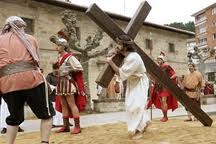This monastery is located near the town of Bolibar (yes, Simón Bolivar the liberator of the Spanish colonies in South America had his ancestors here), belonging to Markina-Xemein (a beautiful but unknown town, where the University of Jai-Alai-Basque pelota- is located). The building is not magnificent, I´d say it´s humble and appropriate for praying and silence…but it is surrounded by a most beautiful scenery, green meadows and valleys, one after the other, and by the magnificent mountains of the Basque Country. It´s open to visitors and it´s also a hospice, where you can rest and share the meditative life of the monks. For more info, https://monasteriozenarruza.net/, available in English and other languages.
Category Archives: religion
The Church (Hermitage) of Santa María de la Antigua, Zumarraga
Absolutely off the beaten path, and hardly visited by any foreign tourist, in Zumarraga lies the “cathedral” of the Basque hermitages. It´s believed that this amazing church was built on the remains of a XII century fortress. While the outside walls and façade are austere and without much interest, the interior is surprisingly outstanding, completely covered in oak wood coffering. There´s a complex wooden framework all over the ceiling, that makes of the inside of this big hermitage a beautiful, relaxing sight. If there´s someone singing on the choir, as it happened during my visit, the effect is simply breathtaking.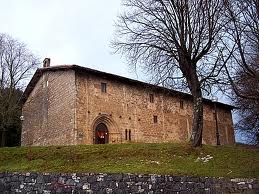
Together with the sanctuaries of Loiola and Arantzazu, it is part of the Route of the Three Temples in the Ignatian Land (founder of the Jesuits). The legend says that the church is made of the stones thrown by the Giants that inhabited the Basque Country before the arrival of christianism, who wanted to destroy it, as churches were a menace for their survival.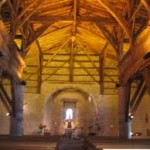
If you really want to see a different church, in a non touristy part of the Basque Country, but close to eveywhere you may stay…this is the place.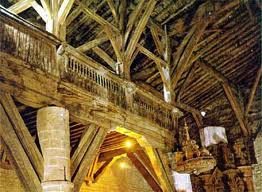
The Basilica of Saint Ignatius of Loyola, founder of the Jesuits
 You have surely heard of the Catholic order of the Jesuits, as they are present all over the world. But I´m sure you didn´t know that the founder was born in 1491 in the heart of the Basque Country, in Azpeitia. Iñigo de Loyola (born Iñigo, a Basque name, that he changed later to Ignacio), of a noble family and educated in the best manner, soon became a soldier serving the King of Castile. In 1521 he was injured while battling in Pamplona, and retired to his fortress in the valley of Loiola, near Azpeitia and Azkoitia. During his long recovery he got used to reading religious books, that made him rethink his whole life. Once recovered, he started a life of sanctity that led him to the foundation of the Jesuit order, probably the most influential in the history of the Catholic church.
You have surely heard of the Catholic order of the Jesuits, as they are present all over the world. But I´m sure you didn´t know that the founder was born in 1491 in the heart of the Basque Country, in Azpeitia. Iñigo de Loyola (born Iñigo, a Basque name, that he changed later to Ignacio), of a noble family and educated in the best manner, soon became a soldier serving the King of Castile. In 1521 he was injured while battling in Pamplona, and retired to his fortress in the valley of Loiola, near Azpeitia and Azkoitia. During his long recovery he got used to reading religious books, that made him rethink his whole life. Once recovered, he started a life of sanctity that led him to the foundation of the Jesuit order, probably the most influential in the history of the Catholic church.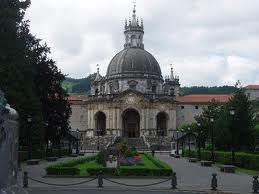
The 18th century basilica is located in a beautiful valley, surrounded by a park full of trees and by the Urola river that flows through the mountainous scenery. As you can see by the pictures, it´s a magnificent but at the same time a modest building, with a great dome covered in baroque paintings and designs. On its left hand side you can visit the birthplace of San Ignacio de Loyola, a.k.a. Iñigo de Loyola, that has been beautifully restored to its original state. You can visit both buildings, and in the fortress tower you can see the rooms as they were in the 16th century.
Right by the Basilica (or Sanctuary) there´s a nice, cozy hotel and some rural housings, as well as fine restaurants, in an atmosphere surprisingly almost tourist free. The valley offers very interesting visits, like the Ferrería de Mirandaola (Ironmongery) in the Iron Valley or the town of Idiazabal, where the world famous Idiazabal sheep cheese is made (also, the Cheese Museum deserves a visit).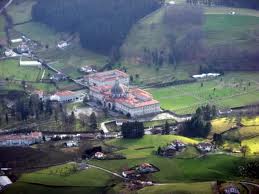
Holy Week…not so Holy anymore, but still beautiful
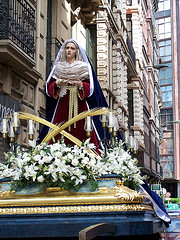 As you probably know, Holy Week is celebrated all over Spain with processions and a wide variety of rites related to suffering and pain. While the most extended idea is that Holy Week is just celebrated in Seville, the truth is that it´s a period of religious passion in many other places. Not so many years ago all tv channels (well, we had just two when I was a kid) broadcasted religious movies, radio stations played just religious music, cinemas and bars were closed on Holy Thursday, Friday and Saturday, people ate very lightly as a penance and mainly fish, and there was not much to do except attending the local processions.
As you probably know, Holy Week is celebrated all over Spain with processions and a wide variety of rites related to suffering and pain. While the most extended idea is that Holy Week is just celebrated in Seville, the truth is that it´s a period of religious passion in many other places. Not so many years ago all tv channels (well, we had just two when I was a kid) broadcasted religious movies, radio stations played just religious music, cinemas and bars were closed on Holy Thursday, Friday and Saturday, people ate very lightly as a penance and mainly fish, and there was not much to do except attending the local processions.
 It´s not like that any more. Now the religious sense of the Holy Week has been practically lost and it´s a time for holidays. But processions are still there, and in Bilbao they are on the streets for a whole week. They are breathtaking: the sound of trumpets, the penants wearing those high coned hats and covered faces, the rhythm of dozens of drums, the overwhelming silence, the images that are rythmically carried by at least 12 men at an endless pace…It´s really something unique and I love going to see them…of course bars and cinemas and everything is open now, so…yes, we do enjoy a glass of wine and a pintxo afterwards.
It´s not like that any more. Now the religious sense of the Holy Week has been practically lost and it´s a time for holidays. But processions are still there, and in Bilbao they are on the streets for a whole week. They are breathtaking: the sound of trumpets, the penants wearing those high coned hats and covered faces, the rhythm of dozens of drums, the overwhelming silence, the images that are rythmically carried by at least 12 men at an endless pace…It´s really something unique and I love going to see them…of course bars and cinemas and everything is open now, so…yes, we do enjoy a glass of wine and a pintxo afterwards.

In Balmaseda, west of the Basque Country, in the province of Bizkaia, they celebrate the most famous Live Passion, where the inhabitants of this beautiful town hold a religious show in the open air recreating the Passion of Christ. Breathtaking, real…it takes place at night and hundreds of families and visitors gather for a religious show that has been represented for the past three centuries and always with town locals, that play their roles as real professionals. www.viacrucisbalmaseda.com, part of it in English.